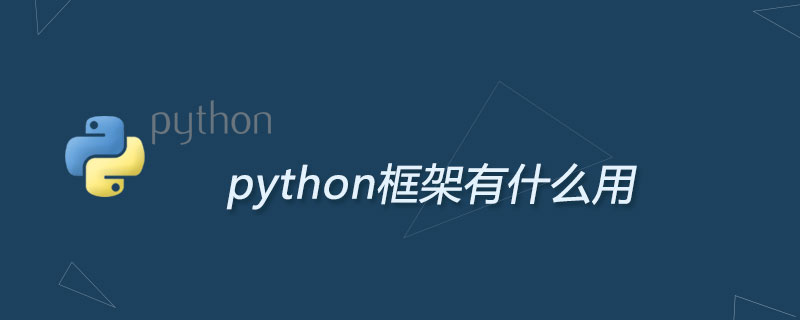
The python framework has encapsulated the basic code and provided corresponding APIs. Developers can save a lot of code writing by directly calling the encapsulated APIs when using the framework, thus improving work efficiency and development speed.

The framework is a semi-finished product that has encapsulated the basic code and provided the corresponding API. Developers can directly call the encapsulated API when using the framework. Save a lot of code writing, thereby improving work efficiency and development speed.
The choice of the right framework depends on the size of the project, its communication needs, whether it is a standalone application, the level of customization required, overhead and many other factors. Just as importantly, it depends on which framework suits your personal way of working. Review these projects and download their latest releases.
Let’s talk about the commonly used frameworks in Python
1. Django
Django can be said to be the most powerful among the Python frameworks. The documentation is complete, the market share is the highest, and the number of positions recruited is also the largest. What distinguishes it from other frameworks are:
1. Full set of solutions: Django, like Rails, provides a full set of solutions (full-stack framework batteries included), and basically everything you need is available (cache , session, feed, orm, geo, auth), these are all created by Django itself. Django basically has all the necessary tools for website development, so the development efficiency is high, and various problems can be solved.
2. Powerful URL routing configuration, Django allows you to design a very elegant URL. In Django, your basic customer is the same as the ugly GET sey bye bye.
3. Self-service management backend, admin interface is a more eye-catching contrib (donation, donation) in Django. You can have a complete backend management interface with almost no need to write code.
2. Pylons
Another giant of the Python framework is Pylons (TurboGears2.x is based on Pylons, and repoze.bfg is also incorporated in the Pylons project).
The design concept of Pylons is completely different from that of Django. Pylons itself only has about two thousand lines of Python code, but it comes with some third-party modules that are almost used by pylons. Pylons only provides a shelf and optional solutions. Users can choose components such as Template, ORM, form, and auth according to their own preferences. The system is highly customizable. It can be said that pylons is a glue framework designed in glue language.
3. Tornado
Tornado is a Web server and a micro-framework similar to Web,py. As a framework, the idea of Tornado comes from the Web. py. The design of Web.py strives to keep it simple and powerful. There is not much code in total, and it does not rely on a large number of third-party modules like Pylons. Instead, it provides some things necessary for a framework, such as: URL routing, Template, and database access. .
The advantage of streamlining a framework is that you can focus on business logic instead of spending too much energy on the framework itself, but the disadvantages are also obvious, and many things need to be done personally.
The above is the detailed content of What is the use of python framework. For more information, please follow other related articles on the PHP Chinese website!